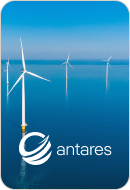Innovation in renewables
We innovate to improve the efficiency of our renewable assets and accelerate their integration into the electricity system
R&D Renewable energy Decarbonisation
Through R&D&I at Iberdrola, we seek continuous improvement in the efficiency of our facilities and the processes associated with production. Thus, we promote the integration of clean energy into the electricity system in a sustainable, safe, and affordable manner, and we make progress in the transition towards a decarbonised energy model.
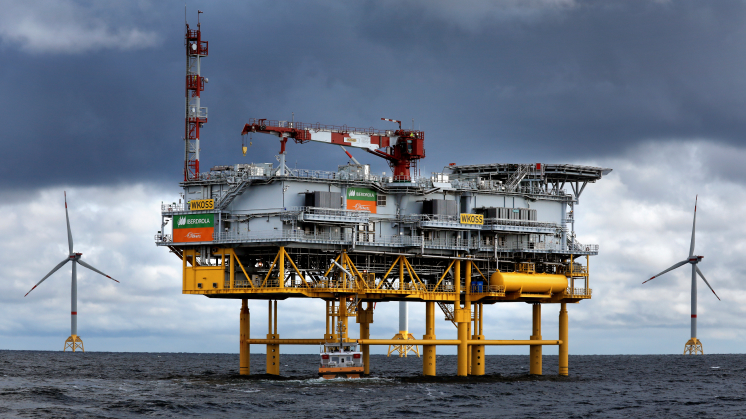
The international community is moving towards a decarbonised economic model, in which greenhouse gas emissions caused by energy consumption must be phased out. In this way, citizens will have to meet their energy needs in a sustainable manner, at a competitive price and with security of supply.
The electricity sector's ability to integrate renewable energies positions it as a leader in leading this decarbonisation in energy generation in the most immediate and competitive way, while improving the overall efficiency of the system. To meet this challenge and remain at the forefront of technology, at Iberdrola we have been developing multiple R&D&I projects in the area of Renewables for more than two decades.

MeteoFlow Project
Anticipating weather events to optimise renewable production.
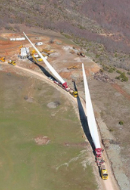
Do you know Blade Lifter?
This technology uses the inclination of the blades to facilitate their transport.
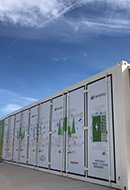
BESS
Discover the battery energy storage systems.
Clean energy innovation
 Wind energy
Wind energy
Twenty years ago we were pioneers in onshore wind energy generation and, with the same vision of the future, a decade later we have made offshore wind one of our main growth vectors. Innovation is essential in the planning, construction and operation of wind energy developments − whether onshore or, especially, offshore − to reduce operating and maintenance costs, limit risks and guarantee the competitiveness of production.
Iberdrola participates in various research projects on, for example, the extension of wind assets beyond their useful life, analysing repowering alternatives or systems for recycling wind turbine elements. We also develop internal tools for analysing component reliability and we analyse and incorporate new control strategies in wind turbines.
In onshore wind energy, for instance, we collaborated in the Enerxico project, which sought to reduce uncertainty in energy assessments through supercomputing solutions applied to CFD models; or the Europe-Brazil HPC4E (High Performance Computing for Energy) collaborative project, with the aim of using fluid dynamics models to design and simulate wind farms.
In offshore wind, we have led the European ROMEO project to develop new models and tools for the early detection of faults thanks to the use of Big Data. We are currently collaborating in the WindTwin project, which aims to develop and validate a digital twin (DT) of an offshore wind farm for highly accurate prediction of production and end-user energy demand.
We also participate in initiatives such as Offshore Wind Accelerator, led by The Carbon Trust, which seeks to reduce the costs of this technology; or Promotion, a project that seeks to develop the technology of various high-voltage direct current systems (converters, protections and switches).
 Floating offshore wind energy
Floating offshore wind energy
At Iberdrola, we are also committed to the floating offshore wind sector, which opens the door to deeper sites further from the coast, as it does not require rigid supports to the seabed, and allows the deployment of wind turbines in larger areas with much greater wind potential.
After a decade of participating in various R&D projects around this novel technology, Iberdrola went a step further to launch projects of floating wind energy demonstrations. Thanks to the Met Center in Norway, we have worked developing a 10 MW floating offshore wind turbine and a semi-submersible concrete floating structure, initially designed to operate in North Sea conditions, with the ambition of being the starting point for future 500 MW floating wind farms. Our researchers have also considered the cost and logistical feasibility of concrete versus steel technology.
 Photovoltaic energy
Photovoltaic energy
Photovoltaic solar energy is one of the most established renewable energy sources and a main pillar of our growth. Historically, photovoltaic systems have always been installed on the ground or on roofs. However, thanks to the advent of floating photovoltaics, it is now also possible to exploit the extensive resources of marshes, reservoirs and the sea. Large areas with full exposure to the hours of sunshine.
In this regard, different feasibility studies are being developed, among which the following stand out. The aim of these studies was to analyse the technical and economic feasibility of this type of installation in various ponds and reservoirs, both in Spain and in France, Brazil and Mexico. Floating solar plants have the potential to save large areas of land, contribute to reducing the evaporation of water from the reservoir and have greater efficiency in their panels thanks to a lower ambient temperature.
 Agrovoltaic energy
Agrovoltaic energy
Through our PERSEO programme for start-ups, we validate the application of four tech solutions that facilitate the production of agrovoltaic energy. This translates into making photovoltaic solar generation compatible with activities related to agriculture, horticulture, livestock, fish farming or beekeeping. This improves the efficiency and competitiveness of the facilities, the use of the land and the protection of biodiversity. This practice also tends to favour photovoltaic self-consumption to cover the energy needs of farms.
-
Irrigation: The pilot project of the company EcoEnergías del Guadiana combines the cultivation of tomatoes under fixed or retractable structures that support solar panels, mitigating plant stress due to heat and hail, saving water and improving harvest results.
-
Viticulture (wine growing): The Winesolar project − with the collaboration of Techedge, PVH and the Gonzalez Byass winery − aims to protect vineyards by generating shade thanks to a tracker guided by artificial intelligence. The trackers will collect data to measure humidity and temperature and adapt to the needs of the vineyards. The panels, carefully integrated into the landscape, will create an ideal microclimate against thermal and hydric stress.
-
Fruit trees: Ombrea presents a solution with solar panels that extend or retract to modulate light and shade according to climatic data collected in the field through sensors. The aim is to protect plants from heat waves, drought, hail or frost.
-
Animal welfare: FarmLife, a platform for analysis and monitoring of bovine behaviour by itk, aims to save time and increase productivity by providing data for decision-making on four pillars: reproduction, nutrition, comfort and health.
 Battery storage
Battery storage
Energy storage systems are set to become an essential element in the electricity system of the future, ensuring the stability and reliability of the grid as well as integrating and harnessing energy from renewable sources. In this area, Iberdrola has an extensive portfolio of innovation projects with battery energy storage systems (BESS), with a capacity that will reach 300 MW in 2025, mainly in the markets of the United Kingdom and Australia, with a forecast to reach 900 MW.
In Spain, several projects have already been executed, such as the installation of a battery at the Arañuelo III photovoltaic plant (9 MWh storage capacity); another at the Abadiño transformer substation (3.5 MWh storage capacity); and another at the Elgea-Urkilla wind farm (5 MWh storage capacity). In the Canary Islands, we will also install batteries in the Ifara and El Vallito wind farms, which will incorporate a storage capacity of 12 MW.
To make PV or wind facilities with batteries hybrid, we have designed a modular tool to estimate and optimise the storage requirements of each plant, considering how the system interacts with the grid or with the corresponding generation technology. We have analysed how InMS energy management systems enable optimisation in the operation of hybrid storage systems (HESS) operating with renewable sources.
 Pumped hydro power
Pumped hydro power
Pumped hydroelectric technology is currently the most efficient and mature system for storing energy on a large scale. At Iberdrola, we are leaders with 4 GW of power installed using this technology. Our flagship project is the Támega gigabattery in Portugal − one of the largest hydroelectric projects in Europe in the last 25 years − comprising three dams and three power plants with a combined capacity of 1,158 MW and almost 900 MW of pumping capacity. Linked to the gigabattery, two wind farms will be built that will convert the complex into a hybrid generation plant, whose final power is estimated to reach 300 MW.
We are also developing new technological approaches in the pumping systems of two Spanish reservoirs, increasing their flexibility, storage capacity and efficiency, without modifying the structural conditions of both hydroelectric plants.
At the Torrejón reservoir in Spain, a variable speed turbine and new power electronics units are being designed. Thanks to this, a greater operating range is achieved, implementing rapid changes in active power and allowing maximum use of the waterfall of the hydropower plant. Also in Spain, at the Valdecañas reservoir, the electromechanics of the new turbine are being optimised for making it hybrid with a parallel battery system. This will be accompanied by a new control algorithm that will allow rapid variations in the power injected into the power plant grid and the implementation of a power regulation mode in pump mode as well as the operation over a wide range of heights.

Blade lifter: A pioneer system for wind turbine blades transport
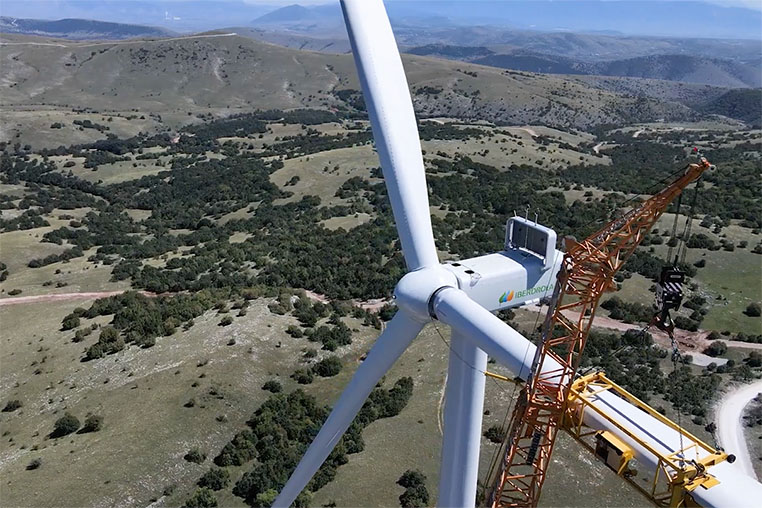
Innovative new wind farm in Greece: Askio III





